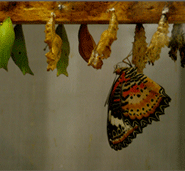Some cities have their writers. Lisbon, for instance, will forever be Fernando Pessoa’s ~ steeped in the saudade of his words, frozen by his poetry, restless as the disquiet between his journal pages. Paris is haunted by the ghost of Hemingway, tied to his heart and bleeding sweet, bitter wine.
Somewhere in Montmarte’s winding alleys lurks the shadow of Henry Miller, in love with his grey city, captured by the Sacre Coeur, lusting after the broken and the beautiful. Some cities have their filmmakers. In Fellini’s hands, Rome is caressed like a rare and rough-cut jewel, in Wyler’s it bears silent black-and-white witness to a princess and a pauper falling in love.
It’s the place of joy and ruin, the sacred and profane, of love and loss. Through the centuries, artists have claimed cities for their own, clutching at them for sustenance and inspiration, crowning them a muse for their art. London remains forever an impression, a shift and play of light in Monet’s paintings; New York a place of longing and loneliness in Hopper’s tragic, everyday people.
Closer home, in India, Satyajit Ray claimed Calcutta for his own, while Bombay lives finely etched under Rohinton Mistry’s pen. And while there are many that declare their fealty for the capital, drawn to its old walled city, its shiny, glittery South, NOIDA (an acronym for the unpoetic, unlyrical New Okhla Industrial Development Area), is an orphaned limb, a rude castaway, a forgotten one-night stand. Which is why it’s perhaps befitting that a photo series on the place is titled “Noida Soliloquy” – after a dramatic device that’s meant only for oneself, cleared away from other characters, spoken in front of but not directed at the audience.
A dedicated creature of the night, Dhruv Malhotra spent hours trawling the streets of Noida for a set of twenty-four pictures that manage to coax poetry from the mundane. While many have, successfully or not, romanticised the unromantic, he does so in a way that startles and moves his viewers. The photographs were “composed” (there’s a good reason why I use this word) between twilight and dawn in some of Noida’s most unsavoury, unevocative pockets – empty parking lots, empty fields, shabby construction sites, desolate streets, makeshift roadside shacks. Some others are in quiet, contemplative places like a graveyard, a misty dirt track leading nowhere.
Running through all though is an unnerving, haunting sense of the surreal – the colours in their intense shades of orange, green and blue seem unearthly, and more than contrasting slivers of light and darkness, which is what you’d expect night photos to play with, the images are illuminated as though from an otherworldly, invisible sun. The reason for this is because Malhotra has “composed” his photographs by pushing the exposure time – from five to as long as forty minutes. This allowed the film to absorb an unusually large amount of light, from stars, the moon, passing headlights, streetlights and apartment blocks. It wasn’t about being trigger-happy, but waiting patiently in the shadows for the sky and the world to change. The gradual accumulation of light gives the photographs their strange vividness. And the process, as every photographer knows, is delicate and tense – there’s a limit to how long film can be exposed before “reciprocity failure” sets in, when the film is much too damaged to be used. Malhotra pushes his medium to the limit and opens up the darkness.
Like all good art, these almost daylight-night pictures force us to look at the mundane in new ways – for instance, a photo of a white toy bunny rabbit on an open field, eerie in its stance and situation, might be the harbinger of the apocalypse; a row of six incomplete Mayavati statues shrouded in blue tarpaulin against a sky streaked with the light of stars seems like a cosmic cult gathering; while in a junkyard a naked mannequin on a rusted car skeleton raises an arm to beckon a horde of worshippers. In your mind you are constructing stories, creating tales behind the strangeness, filling in the gaps, wondering what and why – and this is when an urban space truly starts to come alive and is claimed, by you and the artist, for sustenance and inspiration.
By Janice Pariat, a writer from Shillong, currently living in London.
Editor's Note.
How do we remember? Not with calendars or clocks. Certainly not with the eponymous temporal lobe.
We remember by looking at old photographs, their wear and tear telling time. We remember in a grandfather's waist belt that we no longer know how to wear or by the taste of fake sugar cigarettes that we couldn't smoke. We remember by tasting a spice used in biryani or by feeling the wee corners of our ears turn icy cold.
Read MoreWe remember by looking at old photographs, their wear and tear telling time. We remember in a grandfather's waist belt that we no longer know how to wear or by the taste of fake sugar cigarettes that we couldn't smoke. We remember by tasting a spice used in biryani or by feeling the wee corners of our ears turn icy cold.
Also in this issue
Illusion: Seeing Beyond Seeing
Meaning: In Search of Significance.
Melody: A Different Tune
Rhythm: Ordering Time









